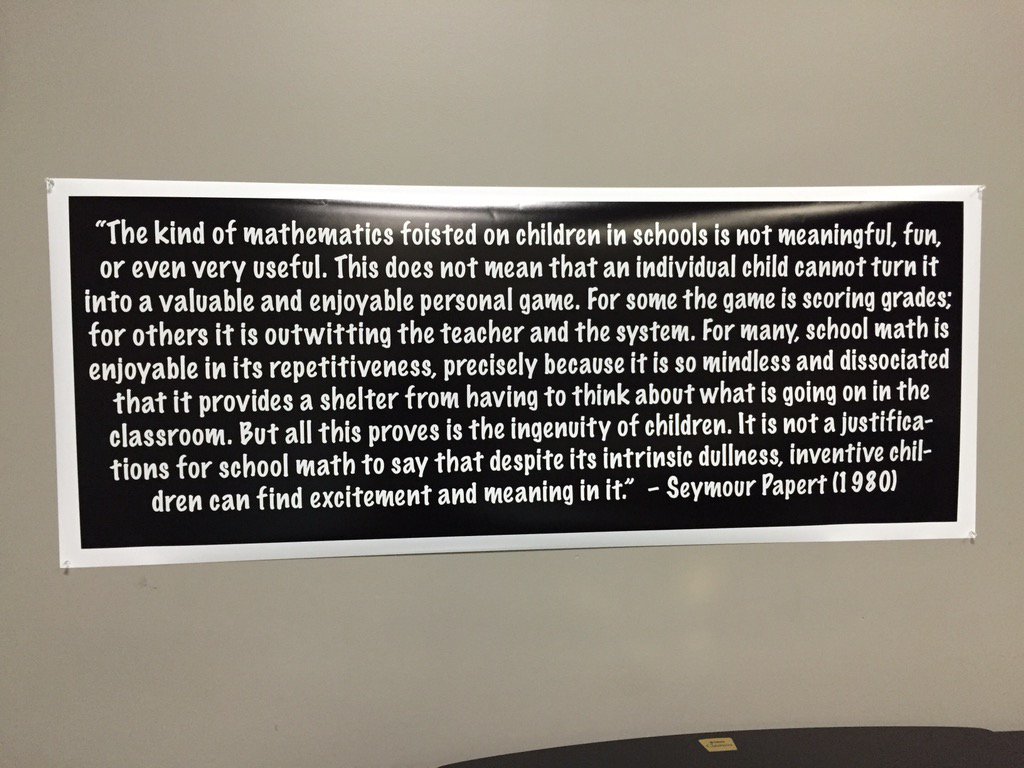We can use different strategies to more easily measure the area of surface space or the length of perimeters in our daily lives.
Sometimes we begin out new maths units by unpacking the central idea, but for this unit we began with a provocation.
Firstly though, on the board I wrote:
Perimeter is.........
Individually, the children write down their own definition to explain what they remember it to be. They then shared their definitions with their table partners and we then shared together as a whole class.
Key words we felt we needed in our definition were: measurement, outside of shapes and length. We felt that provided we had those, our definition would be solid.
We repeated this with: Area is.......
Whilst sharing as a class, we were able to disspell some myths some of of us had about what area is. In particular, some of us hadn't thought about area being surface space and their definitions could apply to volume as well as area. This aroused interesting discussions of how the volume of space is actually quite different to surface area and we came up with some examples of both.
We discussed how perimeter and area can be confusing at times and what their connection with each other is like. We are still wanting to create a memory hook for each to help us not get confused and so will look back at this later in our unit.
With these understandings, we began with this question:
Children drew different sized 'paddocks' and calculated their areas and perimeters. Some came and shared what they did and then a great question was raised:
But, can the area and perimeter sometimes be the same number?
We wondered about that and so experimented with different types of shapes and their sizes.
We found that a square with sides of 4 does actually both equal 16.
Someone then made an interesting theory- perhaps any regular polygon with the same sides might also equal the same.
We thought about this with the example a student suggested:
- an equilateral triangle all with sides of 3.
But then, we realised we don't know how to measure the area of a triangle so we put that question on our maths wonder wall: How do we measure the area of a triangle?
This sparked more curiosity. what about the area of a hexagon or an octagon?
This is the exciting part of inquiry-based maths. When those genuine questions start popping up and which we will explore in our unit.
As we are battling with rain this week, we left those great questions for tomorrow and instead used the dry patch to explore area and perimeter outside.
_______________________________________________________________
We then discussed the following two provocation questions. Students had a choice of which they wanted to try to solve and whether they wanted to do them individually or in a small group.
The I.S.L Board has decided it is time to replace the
astro-turf on the football pitch as it is getting old and the children keep
slipping over on it.
The cost of the astro-turf is CHF 8.50 per square
metre. So, they have decided they will
use that for the football pitch itself, but the surrounding area will be
surfaced with a cheaper astro-turf at CHF 2.25 per square metre.
Additionally, the lines on the pitch require
repainting. The special, adhesive paint costs CHF2.50 per metre. Find an EASY strategy
to calculate the cost of repainting the lines on the pitch.
They have asked you to calculate how much it will cost
to resurface the entire football pitch area.
It is time
to repaint the tennis court areas. The I.S.L Board has decided to repaint the
tennis court themselves with a special non-slip paint that costs CHF 4.75 per
square metre.
Surrounding
the tennis courts, they will use a cheaper paint which costs CHF 0.75 per
square metre.
Additionally, the lines on the courts require
repainting. The special, adhesive paint costs CHF2.50 per metre. Find an EASY strategy
to calculate the cost of repainting the lines on the all the pitches.
They have
asked you to calculate how much it will cost to repaint the entire tennis court
area.
Every student was completely engaged and excited about trying to solve these questions. Hands on maths usually does have that great effect!
Afterwards, I saw this great quote on Twitter via #RMEWillows. Hoping this intro lives up towards at least some of it:





No comments:
Post a Comment
What do you think? ...........